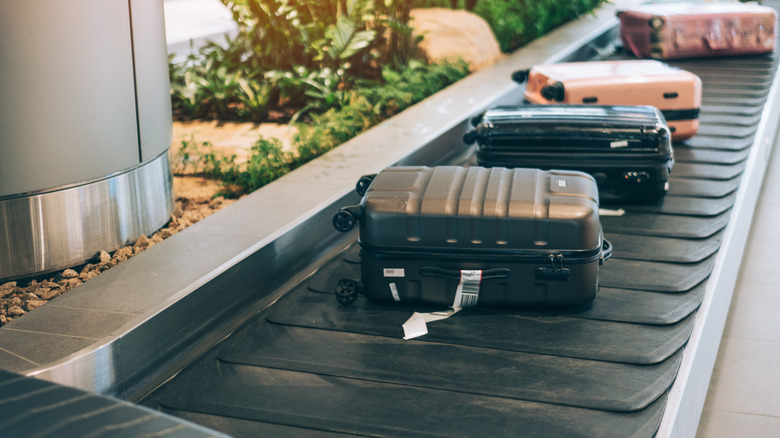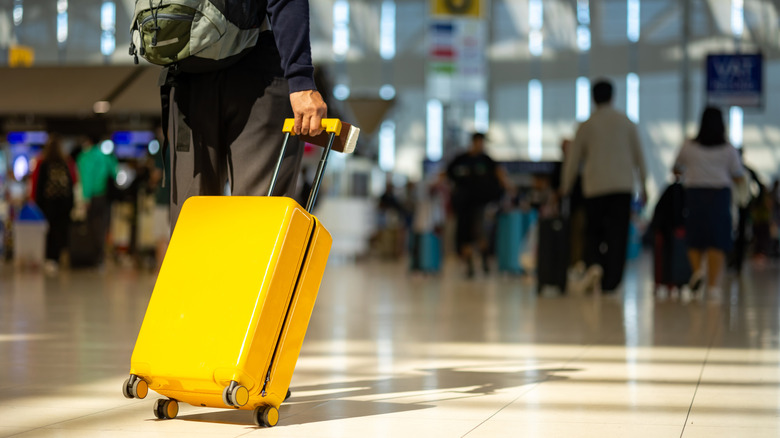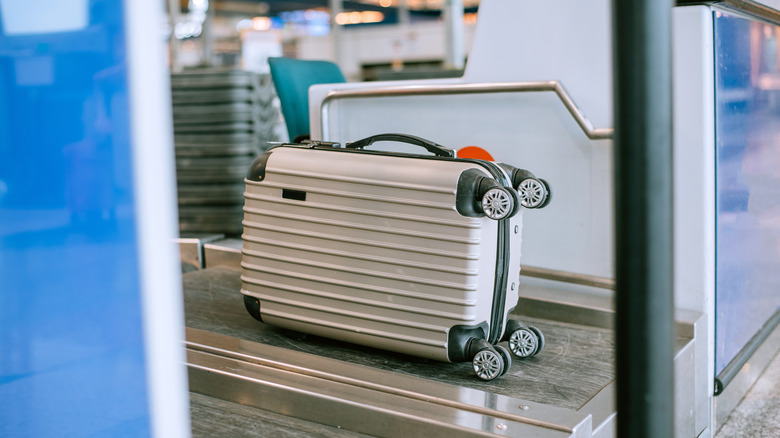What You Need To Know About 'Ghost Bagging' And How It Could Affect You At The Airport
Thanks to steep baggage fees and the ever-present risk of airlines losing luggage, many fliers prefer to travel with just one carry-on bag rather than checking their luggage. That way, they can save money and keep their valuables nearby throughout their journey. However, there is a hidden network of flight ticket holders using checked luggage to their advantage — even if they have no actual plans of flying.
When a bag is placed on a flight without an accompanying passenger, it's called a "ghost bag." Occasionally, an item may accidentally become a ghost bag — such as when it's loaded on the wrong connecting flight. In other cases, criminals purposely send their bags to a destination they have no intention of visiting. They simply check the bag at the airport, leave, and arrange for someone else to grab the luggage at the arrival hub. This can be a quick and efficient way to ship illegal goods to another city without being around to get caught.
As a traveler, this means you might be brushing shoulders with criminals at baggage claim. If you notice an unclaimed suitcase going around the carousels, know that it could be filled with contraband. Additionally, you may want to be extra vigilant when locating your belongings to ensure a ghost bagger doesn't accidentally take your luggage instead of the one intended for them.
What is inside ghost bags?
Perhaps the most significant cautionary tale regarding ghost bagging involves the bombing of Pan American Flight 103. In 1988, the NYC-bound flight blew up and crashed over Lockerbie in Scotland, killing 270 people in total, after a group of terrorists allegedly placed a bomb in a checked bag. The perpetrators, however, weren't on the flight — they only handed the bag over with the timed bomb inside and never boarded the plane.
These days, TSA and similar international security agencies screen checked baggage for explosives and other potentially dangerous items, so ghost bags can't be used to replicate the Pan Am Flight 103 tragedy. Still, ghost bagging may be utilized to transport drugs and other restricted high-value goods. In 2023, three women at Nashville International Airport were accused of participating in a ghost bagging operation to profit off of stolen property. According to police, the group went to the airport to collect a bag that flew on a Southwest flight without a passenger. The luggage contained new Lululemon clothes, a receipt, a fake driver's license, and a credit card, which may have been stolen. Authorities believed the women were returning the clothes, purchased with someone else's money, at different stores in exchange for cash or gift cards.
Ghost bagging happens, even if it's generally forbidden
While some airlines (such as Delta) offer cargo shipping services, sending unattended bags on a passenger flight isn't usually something airlines allow or encourage. Even Southwest, the airline with the ghost bag of Lululemon clothes, states in its Contract of Carriage that it "will only accept Baggage for transportation on a flight on which the Passenger is transported." Still, flights routinely take off without confirming if every passenger with a checked bag made it on board. And because travelers aren't typically required to scan their baggage tags or provide identification to pick up luggage, ghost bags often fly undetected.
International flights are one exception. Bag matching — matching passengers and their checked bags — is a requirement when it comes to international flights, though it's not a must on domestic flights where bags undergo TSA screening. If a traveler fails to board an international flight, their checked bags will be removed from the cargo hold, according to aviation security regulations. Unfortunately, this doesn't mean that unintentional ghost bagging never happens on international journeys. Airlines can still lose checked luggage, even with strict rules in place.


